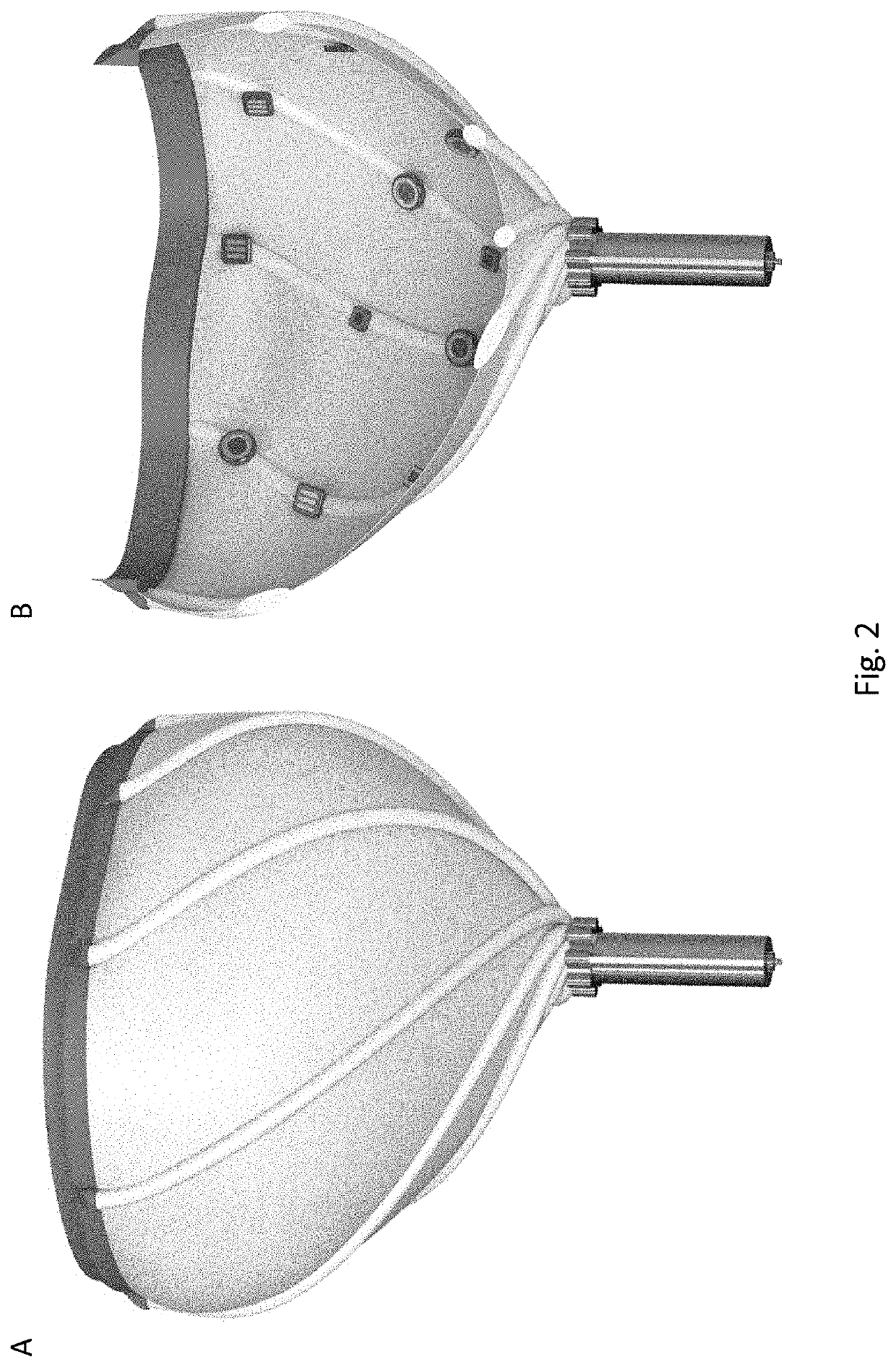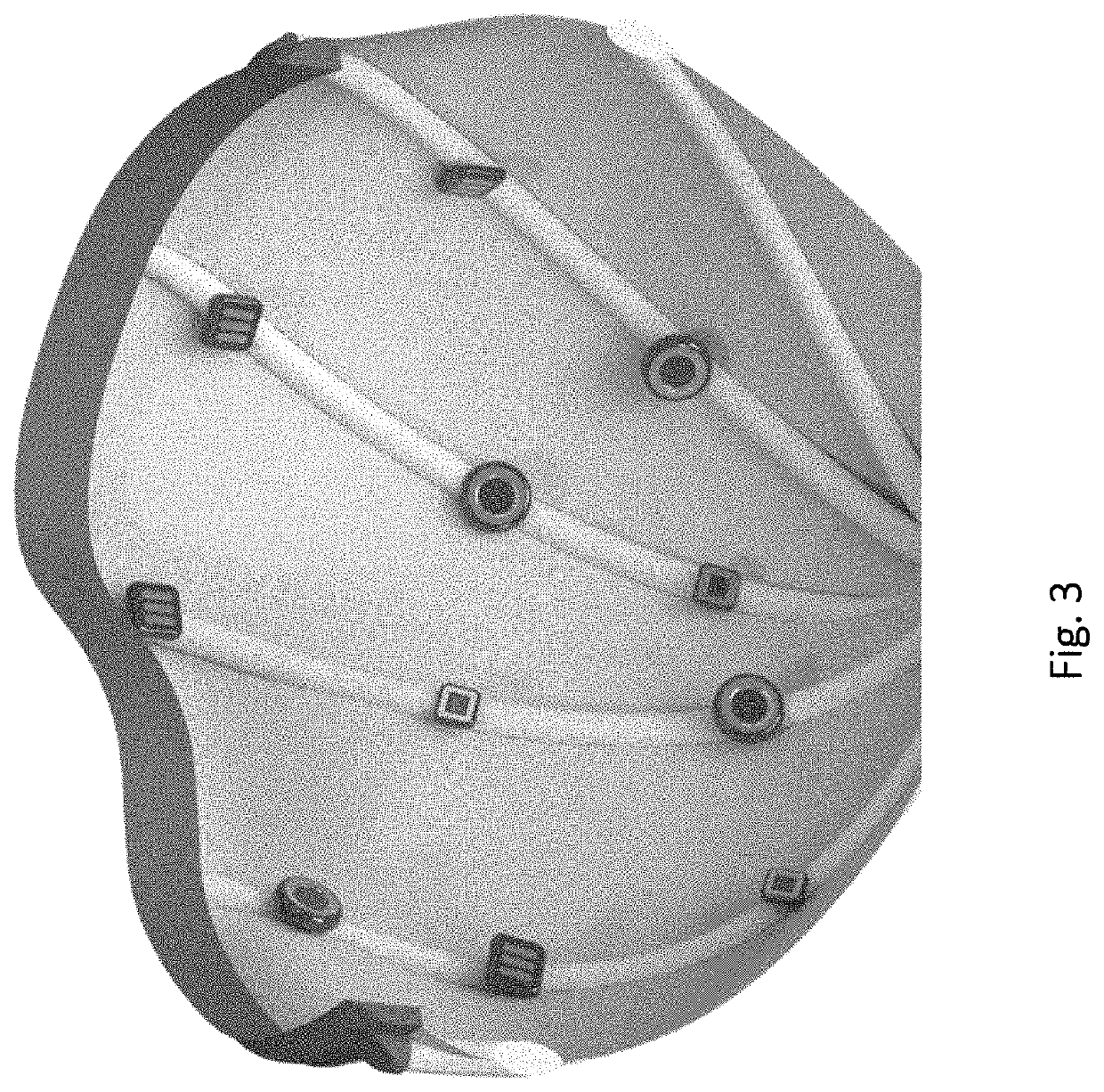System of epicardial sensing and pacing for synchronizing a heart assist device
picardial sensing technology, applied in the field of system of epicardial sensing and pacing for synchronizing a heart assist device, can solve the problems of heart failure affecting 5.7 million individuals, shortage of donor hearts preventing the chance of heart transplantation, and 5.7 million individuals affected by heart failur
- Summary
- Abstract
- Description
- Claims
- Application Information
AI Technical Summary
Benefits of technology
Problems solved by technology
Method used
Image
Examples
Embodiment Construction
lass="d_n">[0056]Disclosed herein is a system including a network of electrodes, accelerometers, processing unit(s) and controllers for sensing, pacing and synchronizing a heart with a wrapping whole heart assist device.
[0057]As defined herein, “sensing” is quantifying the intrinsic electrical activities of the heart.
[0058]As defined herein, “pacing” is induction of an intended electrical impulse to the heart to control its contractile activities.
[0059]As defined herein, “synchronize” means to be in harmony with the heart pumping cycles.
Methodology for Synchronizing a Pulsatile Heart Assist Device with a Pacemaker
[0060]The methods disclosed herein synchronize a pulsatile heart assist-device with the native heart of a patient to ensure that the device helps the heart at both diastole and systole. With the device working properly, reduced ventricular function of the patient is compensated. This method eliminates the potential of the assist device working against the heart at different...
PUM
 Login to View More
Login to View More Abstract
Description
Claims
Application Information
 Login to View More
Login to View More - R&D
- Intellectual Property
- Life Sciences
- Materials
- Tech Scout
- Unparalleled Data Quality
- Higher Quality Content
- 60% Fewer Hallucinations
Browse by: Latest US Patents, China's latest patents, Technical Efficacy Thesaurus, Application Domain, Technology Topic, Popular Technical Reports.
© 2025 PatSnap. All rights reserved.Legal|Privacy policy|Modern Slavery Act Transparency Statement|Sitemap|About US| Contact US: help@patsnap.com



